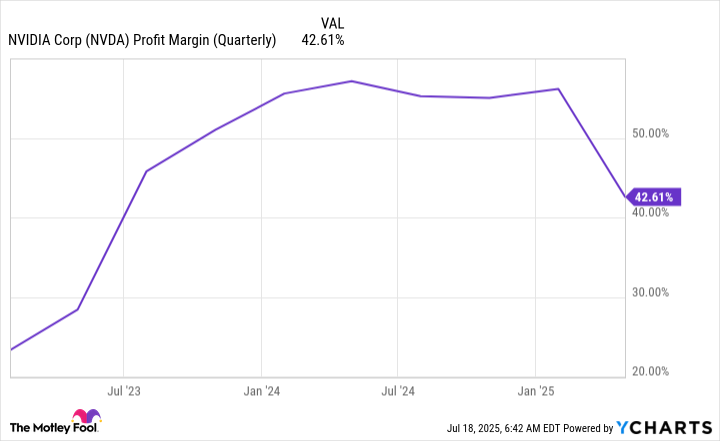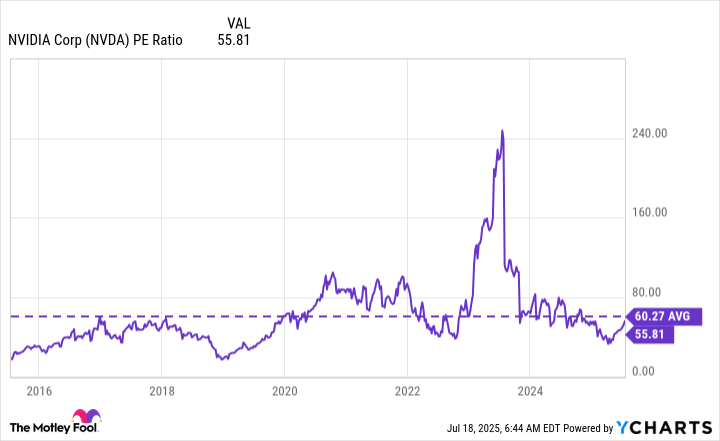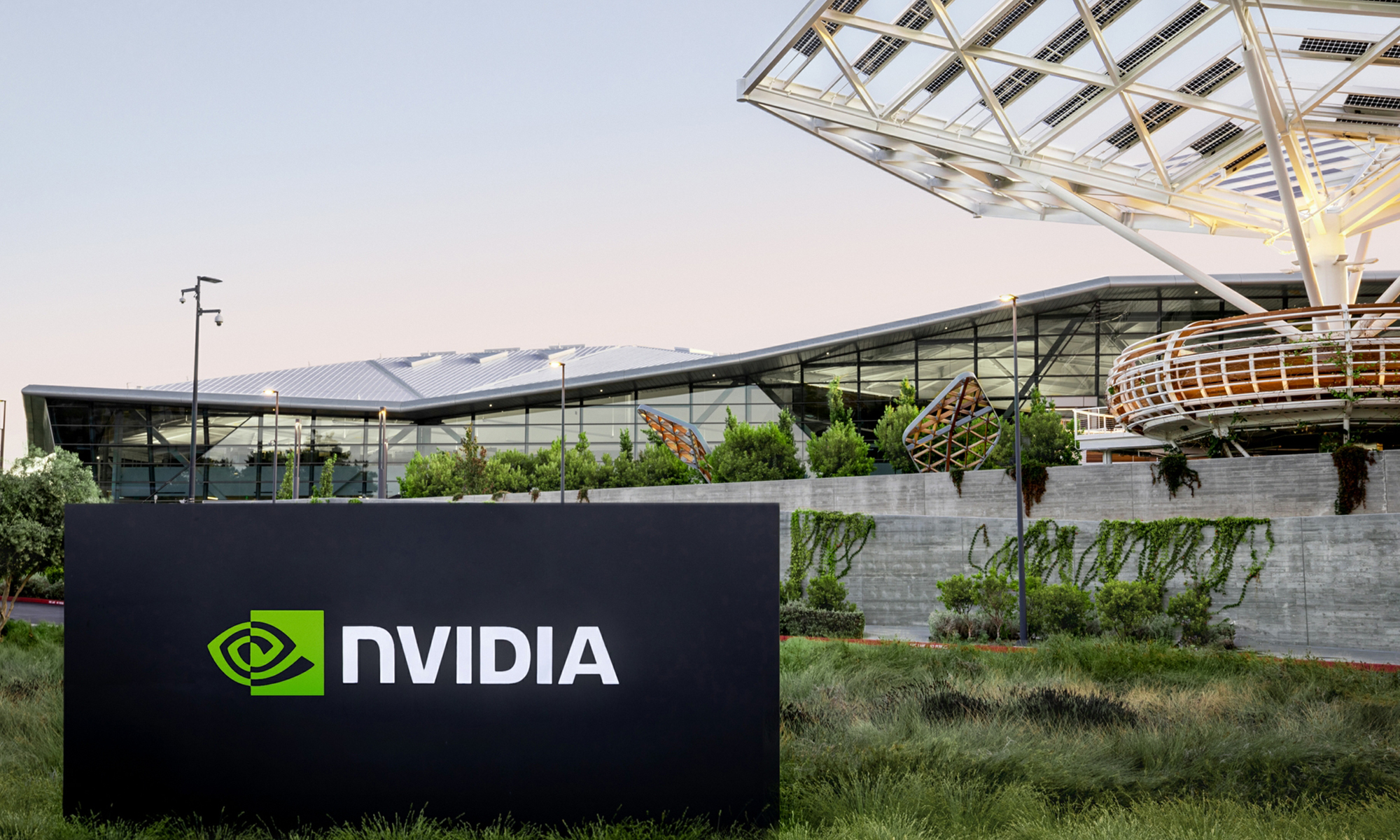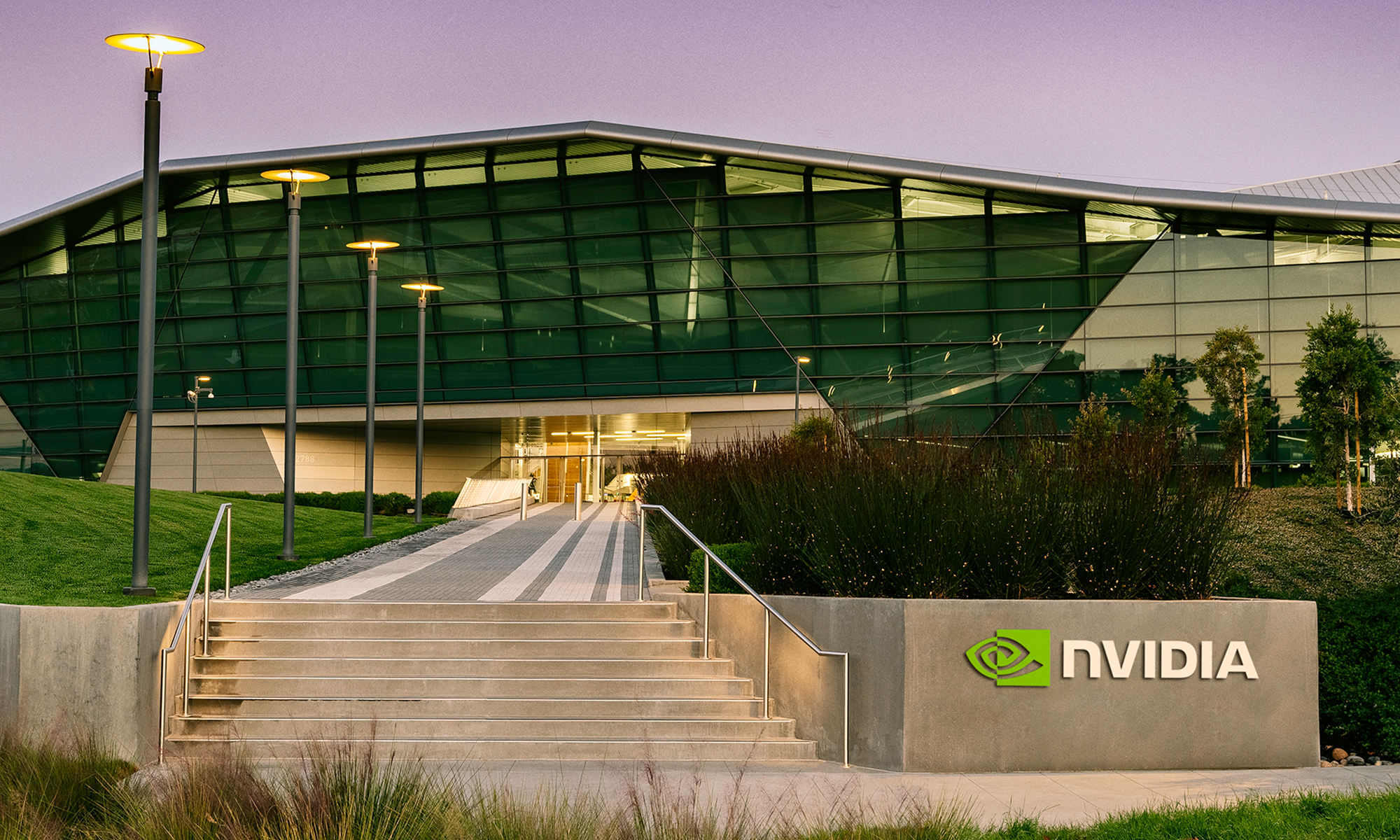Nvidia (NVDA 0.56%) has is now the world's largest company, creating a sizable gap between itself and second-place Microsoft (MSFT +0.43%). However, there are questions about how much Nvidia can grow over the next few years, as it has already been on an incredible run.
I believe there is still ample room for the stock to move higher over the next few years, and a market cap of nearly $7 trillion could be within reach by 2028 if certain projections materialize. That indicates massive upside from today's $4.2 trillion valuation, making Nvidia a smart stock to consider now.

Image source: Getty Images.
Nvidia's GPUs have a dominant data center market share
Nvidia has become the world's largest company through the success of its graphics processing units (GPUs). While GPUs were originally designed to process graphics for gaming, their uses have expanded drastically since their invention. Whether it's creating engineering simulations, mining cryptocurrency, or training artificial intelligence (AI) models, GPUs are useful for any task that demands a lot of computing power. GPUs can process multiple calculations in parallel, which allows them to excel at these tasks. And GPUs connected in clusters are even more powerful. A few companies have created clusters of 100,000 GPUs or more.
Nvidia's GPUs dominate the market, with most estimates placing the company's data center market share at around 90%. For reference, Alphabet's Google Search search engine has a similar market share.

NASDAQ: NVDA
Key Data Points
Nvidia's success isn't just limited to the U.S., either. Its H20 GPUs were incredibly popular in China, even though they were made with limited processing power and performance compared to chips sold in other markets in order to be compliant with U.S. export regulations. However, Washington ruled in the first quarter that those chips could not be shipped, either. However, Nvidia plans to reapply for an export license, backed by guarantees from the U.S. government that the license will be granted. This is huge news for Nvidia, as it ensures that the company will be allowed to compete in one of the two largest AI computing markets.
Nvidia's dominance is quite obvious, but it's the future that investors care about.
Data center growth will drive Nvidia's stock higher
During its 2025 GPU Technology Conference, Nvidia cited a third-party market projection that data center capital expenditures will rise from $400 billion in 2024 to $1 trillion by 2028. Considering that Nvidia generated $115 billion from data centers during FY 2025 (which encompasses nearly all of 2024), it currently receives a significant chunk of those capital expenditures for its GPUs. If we assume that this projection is accurate and that Nvidia will maintain its slice of the data center capital expenditure pie, then $288 billion in data center revenue by the end of calendar year 2028 (which is roughly Nvidia's FY 2029) isn't an unreasonable projection for the company.
If the rest of Nvidia's business grows by 10% during that time, then Nvidia's total revenue at the end of 2028 will be $311 billion. If Nvidia can maintain its 55% profit margin (it dipped in the most recent quarter only due to its license revocation), that will allow Nvidia to produce $171 billion in profits.
NVDA Profit Margin (Quarterly) data by YCharts
Over the past decade, Nvidia traded for an average price-to-earnings (P/E) ratio of about 60.
NVDA PE Ratio data by YCharts
If we assign Nvidia a P/E ratio of 45, to take into account the spike that skews the figure, then Nvidia would be worth $7.7 trillion by 2028.
For Nvidia to achieve that, its data center capital expenditure projection of $1 trillion by 2028 will have to come true and it will have to maintain its market share. Still, with the growing demand for AI, I wouldn't be surprised. Nvidia may be the largest company in the world, but it's only going to keep growing if demand continues, and that makes it a smart investment now.







